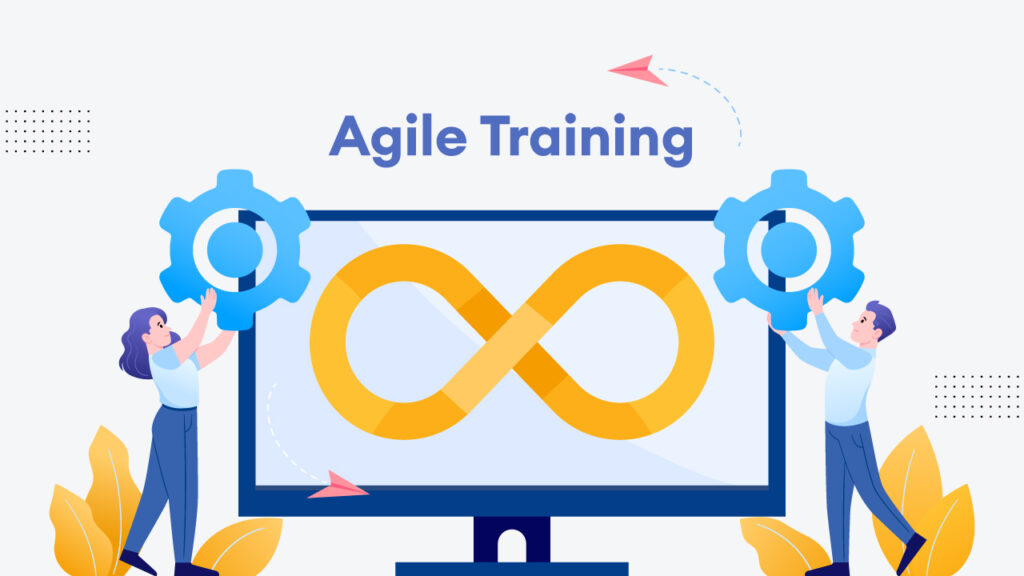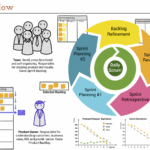Remember those days? The ones where project deadlines felt less like goals and more like impending doom? Where endless meetings led to more confusion than clarity, and plans, no matter how meticulously crafted, seemed to fall apart at the first sign of a real-world snag? Yeah, I do. Because that was my world not so long ago.
I was stuck in a cycle of traditional project management that, frankly, just wasn’t cutting it anymore. We’d spend weeks, sometimes months, planning every single detail, only for a critical requirement to change halfway through. The team would get frustrated, stakeholders would get antsy, and I’d feel like I was constantly trying to herd cats while juggling flaming torches. It was exhausting.
Then, a whisper started making its rounds in my professional circles: "Agile." At first, it sounded like just another buzzword, something for the tech giants, not for someone like me, who just wanted to get projects done without losing my mind. But the more I heard about people talking about increased collaboration, faster delivery, and happier teams, the more my curiosity piqued.
Stepping Into the Agile World: My First Impressions
Curiosity piqued, I decided to take the plunge and enroll in an Agile course. Walking into that first session, I’ll admit, I was a bit skeptical. Would it be filled with jargon? Would it just be a rehash of things I already knew, but with new names?
Thankfully, my worries quickly faded. The instructor, a seasoned professional with a genuine passion for the subject, made it feel incredibly accessible. They didn’t just lecture; they told stories, shared examples, and encouraged us to share our own project struggles. It felt less like a classroom and more like a supportive gathering of people looking for a better way to work.
One of the first things that struck me was how much sense the core idea of Agile made. It wasn’t about abandoning plans; it was about being adaptable. It was about embracing change rather than fighting it. Imagine building a house: instead of drawing up every single blueprint detail before laying the first brick, Agile suggests you build a functional foundation, then add rooms one by one, constantly checking with the homeowner if they like the layout and if anything needs adjusting. This "inspect and adapt" philosophy felt like a breath of fresh air.
The Core of Agile: What I Learned (Simplified for Everyone)
The course broke down the big ideas into digestible chunks, and here’s what truly resonated with me, explained in a way I wish someone had told me years ago:
-
It’s About People and Collaboration: Forget rigid hierarchies. Agile puts a huge emphasis on self-organizing teams who communicate openly and constantly. We learned about daily stand-up meetings (short, focused chats about what you did yesterday, what you’ll do today, and any roadblocks), which sounded simple but promised to cut down on endless email chains.
-
Working Software (or Deliverables) Over Endless Documentation: This was a game-changer. Instead of spending ages writing detailed specifications that might be outdated before they’re even approved, Agile encourages delivering small, working pieces of a project frequently. This means you get feedback early and often, making sure you’re building the right thing.
-
Responding to Change Over Following a Strict Plan: This goes back to adaptability. The world moves fast. Customer needs change. Market conditions shift. Agile teaches you how to pivot quickly, adjust your course, and still deliver value, rather than stubbornly sticking to a plan that no longer makes sense.
-
Customer Collaboration is Key: Who knows what the customer wants better than the customer themselves? Agile brings them into the process, getting their input throughout the project lifecycle. This ensures the end product truly meets their needs, reducing the chances of building something nobody wants.
Beyond Scrum: Other Agile Flavors
While the course spent a good chunk of time on the core Agile principles, it also introduced us to different "frameworks" that help put those principles into practice.
-
Scrum: This was the star of the show for many of us. We learned about roles like the "Scrum Master" (a facilitator and coach for the team) and the "Product Owner" (the voice of the customer, guiding what gets built). We also got familiar with "sprints" – short, time-boxed periods (usually 1-4 weeks) where a team works to complete a defined set of tasks. It felt structured enough to provide guidance but flexible enough to allow for real-world changes. We even did a fun simulation where we built a Lego city using Scrum principles – it was incredibly eye-opening!
-
Kanban: This was introduced as another way to visualize and manage work. Think of a whiteboard with sticky notes moving from "To Do" to "Doing" to "Done." It’s all about limiting work in progress and improving the flow of tasks. For teams dealing with a constant stream of incoming requests, this looked incredibly powerful.
The Real-World Impact: How Agile Changed My Work
Coming out of that Agile course, I felt like I had been handed a new pair of glasses. The world didn’t look different, but I could see it with so much more clarity. The changes weren’t overnight, but they were profound.
- My team, once a group of individuals often working in silos, started to become a cohesive unit. Communication improved dramatically. People felt more ownership over their work and were more proactive in solving problems together.
- Projects started moving faster. By breaking down big goals into smaller, manageable chunks, we could deliver value incrementally. This meant stakeholders saw progress regularly, and we could adjust course much earlier if something wasn’t quite right.
- Stress levels went down. Seriously! While there’s always pressure, the constant feeling of being overwhelmed lessened. We had clear priorities for short periods, and the ability to adapt meant fewer last-minute fire drills.
- My own job satisfaction soared. I felt more in control, more effective, and genuinely excited about the work we were doing. Seeing the team thrive and projects succeed with less friction was incredibly rewarding.
Who Should Consider an Agile Course? (It’s Not Just for Techies!)
If any of my "before" story sounds familiar, or if you’re just looking for a more effective, humane way to get things done, then an Agile course might be for you. It’s truly not just for software developers or IT teams anymore. I’ve seen its principles successfully applied in marketing, human resources, event planning, and even education.
Consider it if you are:
- A Project Manager or Team Lead: Struggling with scope creep, missed deadlines, or unmotivated teams? Agile offers powerful tools to tackle these challenges.
- A Product Owner or Business Analyst: Want to ensure you’re truly building what the customer needs and delivering maximum value? Agile helps you stay connected and responsive.
- A Developer, Designer, or Individual Contributor: Want to work in a more collaborative, less stressful environment? Understanding Agile will help you integrate better into such teams.
- Anyone Feeling Stuck: If your current methods feel outdated or ineffective, an Agile course can introduce you to a mindset that encourages continuous improvement and flexibility.
Finding Your Perfect Agile Course: A Few Tips
If you’re now considering an Agile course, here are a few things I learned about choosing the right one:
- Look for Practical Application: The best courses aren’t just theoretical. They include exercises, simulations, and real-world case studies that let you practice Agile principles.
- Check Instructor Experience: An instructor who has actually implemented Agile in various settings brings invaluable insights and can answer your specific questions with practical advice.
- Consider Certifications (But Don’t Make Them the Only Goal): Certifications like Certified ScrumMaster (CSM) or Certified Product Owner (CSPO) can be valuable for career progression, but the true value comes from the learning, not just the paper. Focus on a course that teaches you well, and the certification will follow naturally.
- Read Reviews: See what previous participants say about the course content, the instructor, and the overall experience.
- Think About Your Learning Style: Do you prefer in-person workshops, live online sessions, or self-paced video courses? Choose what works best for you.
My Final Thoughts: Embrace the Change
Looking back, that decision to sign up for an Agile course was one of the best professional investments I’ve ever made. It wasn’t just about learning a new method; it was about embracing a new mindset – one of collaboration, adaptability, and continuous improvement. It brought clarity to my chaos and a genuine sense of purpose to my work.
If you’ve been on the fence, wondering if Agile is for you, I wholeheartedly encourage you to take that step. You might just find, like I did, that it’s the key to unlocking a more effective, enjoyable, and less stressful way of working for yourself and your team. It’s not just about doing projects differently; it’s about doing them better, together.



